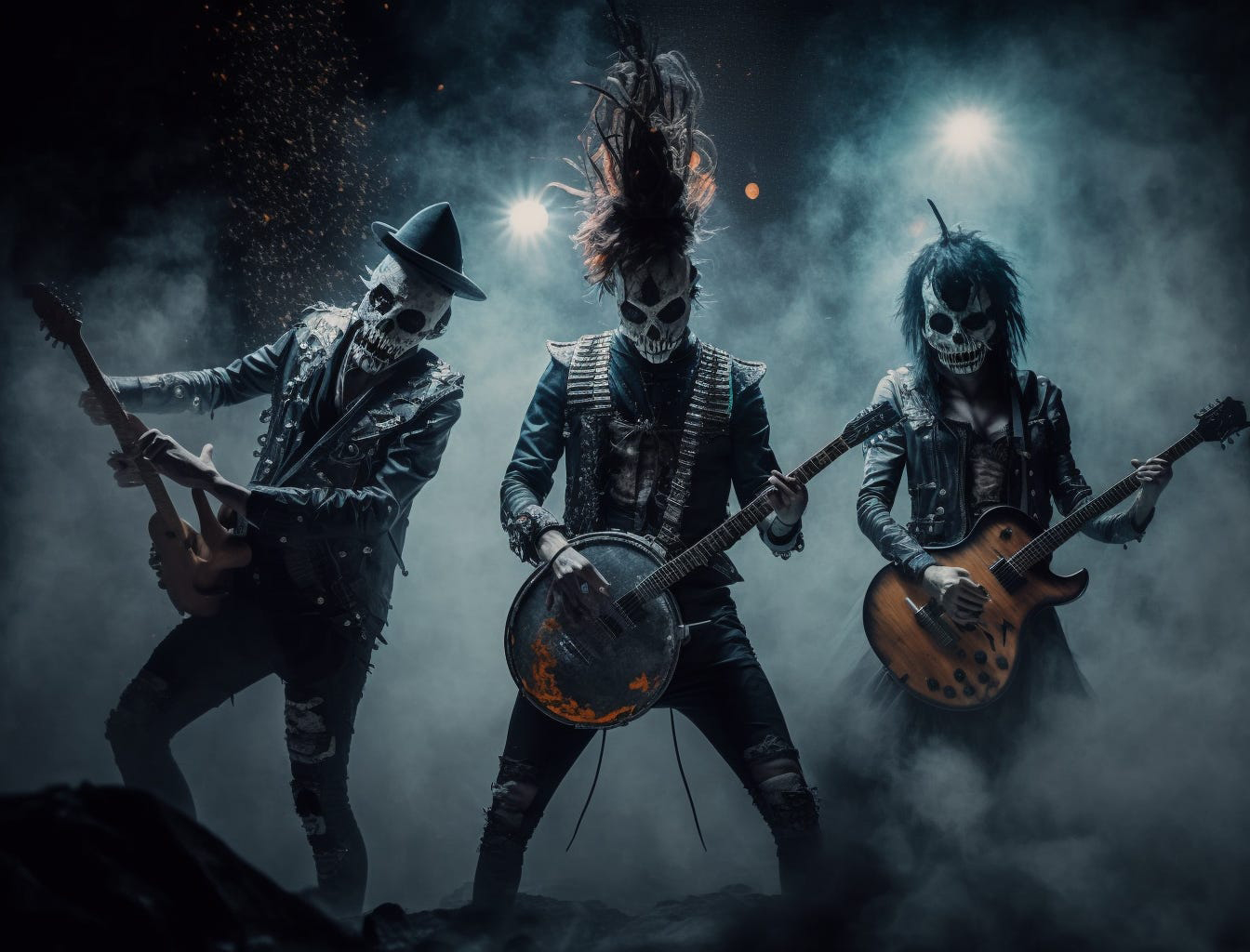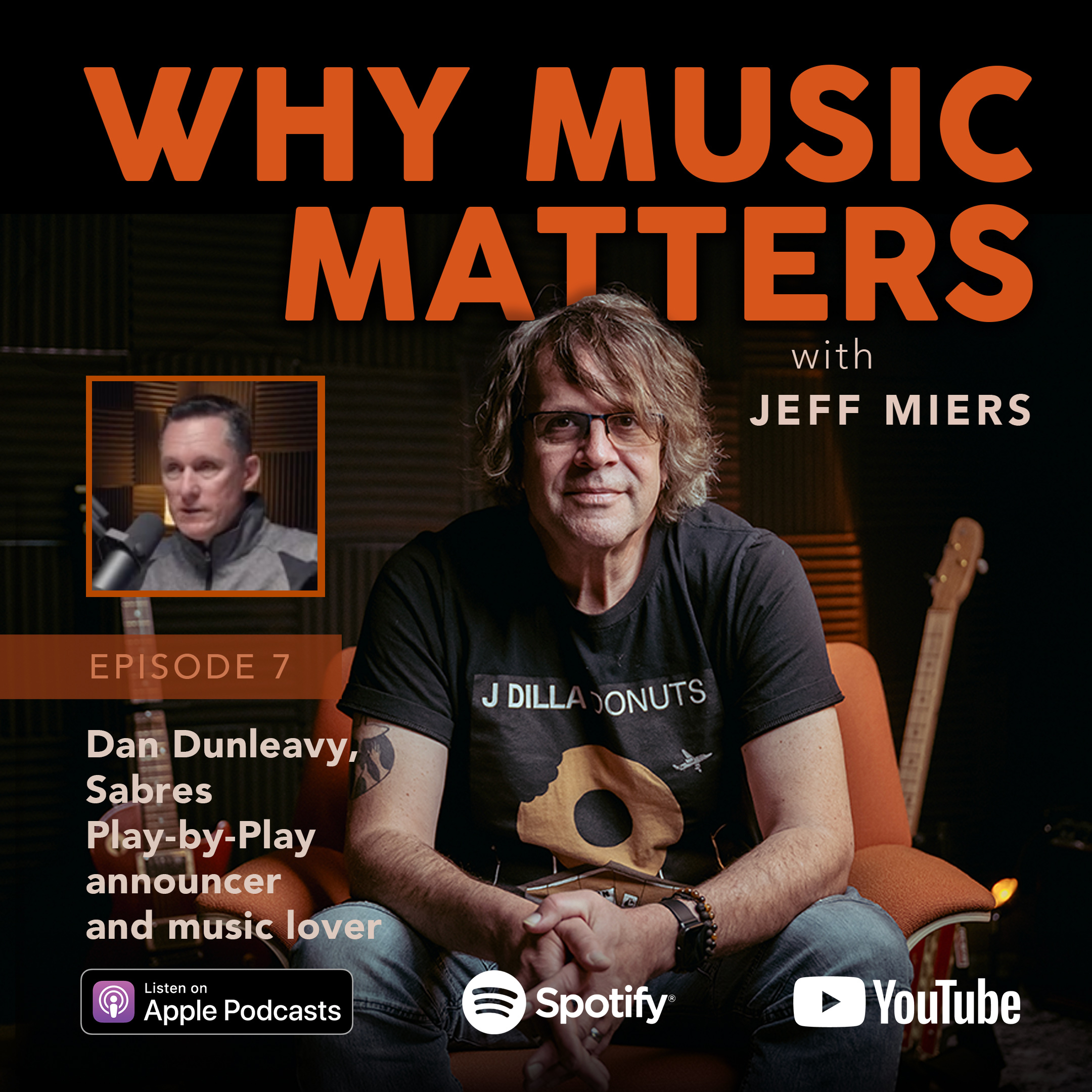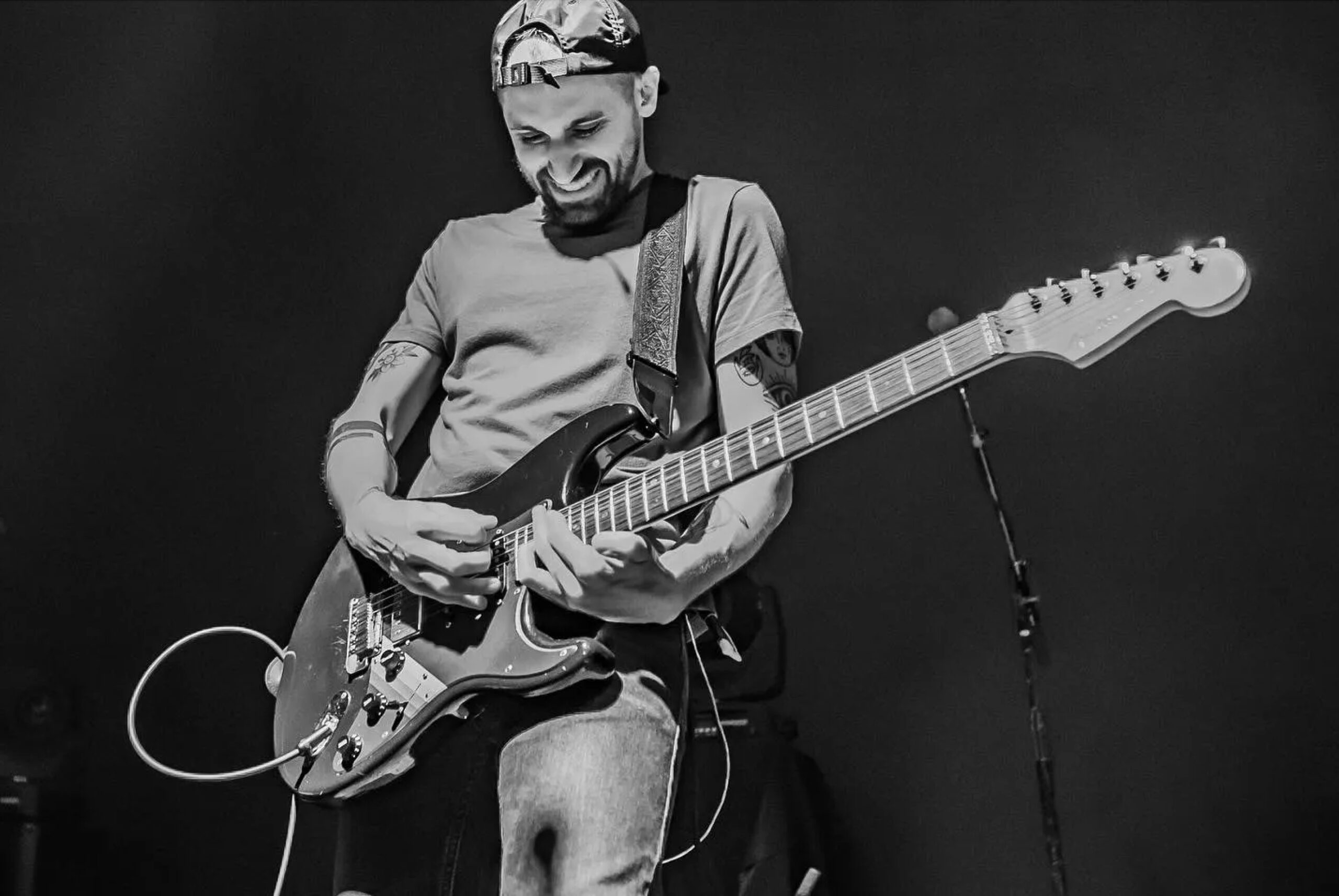The old warhorse phrase “The future is now” is familiar to most of us, whether we happened upon it via a television advertising campaign, a political rhetoric soundbite, or a book of Zen koans. The implication is that the future we imagined in the past is already here, and we’re occupying it in the present, even if we don’t realize as much. We’re meant to take inspiration from this, to seize the moment, or to at the very least ruminate on the cyclical nature of time itself.
In Buffalo, however, all too often the more apt phrase might be “The future was yesterday.” We seem to hover somewhere behind the curve, particularly when it comes to celebrating our own culture in a sustainable way.
The regional music scene is a major component of that local culture. And as much time as I’ve spent celebrating that scene over the past several decades, if I’m being honest, I’ll admit that we’re not getting our money’s worth out of it, both literally and figuratively.
For a long time, it has been apparent that our region is not one that thinks about music in terms of policy, but rather, passively accepts music in practice.
We all enjoy it, but we don’t do much to ensure its survival, or to fully capitalize on what it has to offer. And yet, in other markets, music, when employed in a deliberate and intentional way, has been proven to deliver economic, social and cultural growth.
So how how do we get there from here?
Why do working musicians make the same money today that they made in 1990, the year I arrived in Buffalo?
Why isn’t our depth of widely variegated musical talent a magnet for music-loving tourists, as it is in cities like Austin, TX or even Cleveland, OH?
Why is something that clearly means so much to so many in the region routinely treated as an afterthought?
“I grew up in Toronto and went to school in Hamilton, so I’m very familiar with Buffalo’s music heritage,” says Dr. Shain Shapiro, founder and CEO of Sound Diplomacy, an international strategic consultancy built on the concept of “Music Urbanism” – defined by Shapiro as “the idea that we think about music, in all its forms, in how we plan, fix, improve and maintain urban spaces.” In Shapiro’s view, establishing Music Urbanism is a necessary first step in the building of regional music hubs into thriving “Music Cities.”
“I went to a ton of gigs in Buffalo, growing up. I wouldn’t be who I am without the experiences I had as a teenager seeing gigs in Buffalo. But having a music heritage doesn’t mean that music is deliberately and intentionally being used as a positive force to improve, enhance, and support city objectives. It doesn’t mean music is reaching everyone, or that everyone has access to it, equitably. Employing music in this way means developing a strategic structure around it, investing in it like it’s another piece of infrastructure or city amenity, and resourcing it to understand its strengths and its challenges.
“Accepting ‘we have a great live music scene’ doesn’t mean much to me unless you understand the intricate impacts and challenges. How do we know what to plan, what to fix, what to improve, if we don’t know the ecosystem behind it? Understanding this is how to begin to look at music in this way.”
Keep it local
At the center of any successful music scene is a deep commitment to the concept of locality. “Keep it Local” makes a great bumpersticker slogan, to be sure, but the concept is deeper than mere rhetoric might suggest, implying as it does an understanding of what it is that makes our culture distinctly our own.
In Buffalo, defining that culture is particularly difficult, because our greatest strength is our diversity. There is no single sound that defines Buffalo music. Rather, radical hybridizations of nearly every imaginable musical idiom are the norm. Marketing this musical melange to outsiders has proven to be tricky, which is not surprising, since a healthy portion of our own indigenous population doesn’t seem to realize that we are living in a potential musical Mecca.
John Cimperman, founder of 42 North Brewing Company East Aurora and co-founder of the annual Borderland Music & Arts Festival, has spent a lot of time ruminating on the concept of locality. His deep experience in brand-building and marketing grants him a clear-eyed view of our regional music scene’s strengths and weaknesses, and has encouraged him to find inherent parallels between locally crafted music and locally crafted beer. In March, 42 North released an immaculately produced video celebrating the simpatico relationship between the two.

“It just makes sense for us all to support each other,” Cimperman says of the local music venue community, noting that he spent much of the downtime created by the pandemic to form friendships with venue-owners in Buffalo – to the point where members of the team at the Sportsmen’s Tavern in Black Rock helped Cimperman redesign 42 North both physically and acoustically, reimagining the space as a full-on music venue. “We wanted to help carry the torch, as a home for both traveling musicians and Buffalo’s own original musicians,” Cimperman says, noting that he finds in both Buffalo original music and regional brewing “a commitment to authenticity, to keeping it real.”
“Craft beer is like micro beer, and original music is like micro music, as opposed to macro beer, which is like cover bands, you know what I mean? (Laughs) It really comes down to originality, authenticity and creativity. The tag line for the video campaign we just launched is ‘Listen local, drink local.’ And this is how we need to continue to build Buffalo, in my view – by capitalizing on these creative synergies between all aspects of the scene. This is how we connect the pieces to build something better.”
Come for the food, stay for the music, or vice versa?
When we look to the successes of urban areas (and their surrounding environs) that have made the successful transition to become bonafide Music Cities, we see that tourism is a vital and wholly necessary component of that transition. It’s not enough for all of us directly involved in the music scene to know what we have here – we need to spread the word.
“We’ve recognized for some time that places like the Colored Musicians Club, Sportsmen’s and Babeville attract visitors from out-of-town,” Visit Buffalo Niagara VP for Marketing Ed Healy told me in early 2020. “And we’ve heard plenty of anecdotal accounts of out-of-towners traveling to Buffalo for concerts at Keybank Center, the Cobblestone Live Festival, Borderland Festival and Canalside, among others. We’re also very aware that (Buffalo-born hardcore outfit) Every Time I Die attracted a significant number of fans from around the world to its annual festival event at Buffalo Riverworks, and that the band went out of its way to welcome and orient those fans.”
So, does progress toward the Music Urbanism model depend on the largesse and dedication of individual entrepreneurs and entities? Are we meant to build this ‘Music City’ one brick at a time, solely through our own blood, sweat and tears?
“It’s true that most of this activity has happened primarily in an organic way, without the benefit of consistent marketing and public relations to help maximize that impact,” Healy told me. “After attending a seminar on music tourism at the US Travel Association’s annual conference in 2019, (VBN CEO) Patrick Kaler and I recognized that Buffalo has significant unrealized potential as a music destination and that it was time to put some marketing muscle behind this sector, as we have with other sectors, like architecture and culinary.”
VBN’s pre-pandemic investment in music tourism promotion was the first step in a deliberate process of enhancing Buffalo’s reputation as a music city, Healy said. “The goal is attracting more music tourists, who in turn leave behind more money in our clubs, concert halls, restaurants, bars and hotels.”
At that same US Travel Association meeting, Healy met Sound Diplomacy’s Shapiro and, according to Shapiro, “chatted at length about developing a music strategy for the (Buffalo) region, but right now, the budget – at least specific to (VBN) – isn’t there.”
This may be changing. At present, Visit Buffalo Niagara is refining its continued music tourism initiatives for the remainder of the year and into the early months of 2024.
In the meantime, the reality remains a gritty one for such culturals as the Sportsmens American Foundation, which has spent much of the past 5 years attempting to bolster Buffalo’s reputation as a music tourism destination.
“From the beginning, about 5 years ago, we thought Buffalo and Western New York had great potential to be a musical tourist destination,” SAMF President Bob McLennan told me just prior to the pandemic. “We set up our first summer festival with the idea that we could draw from Southern Ontario and Central NY and even PA and Ohio. But it ain’t easy, that’s for sure. We’ve had some anecdotal success with attracting people from outside our own neighborhoods, and I’m sure some restaurants and a couple hotels made a little extra money because of that.
“There are a lot of music festivals throughout the entire country, catering to all kinds of musical tastes. It’s all about putting together a bill of artists that will entice music fans to travel. But we think our strength is that, once they’ve been here, they’ll come back, not necessarily for a big festival, but to experience the entire music scene right here in Black Rock, or downtown and throughout our region.”
Education and the entertainment economy
Despite the oft-referenced “Buffalo Renaissance” of the past decade, and the many benefits that have been a part of it, musicians in Buffalo still perform for the same wages they made 25 years ago, and it remains as difficult to make a sustainable living as a full-time musician in Buffalo as it has been seemingly forever. I asked Shapiro if, in his vision of a Music City, musicians in a city like ours might reasonably expect to earn a consistent living wage.
“It’s a complicated answer,” he said. “I wish I could wave a magic wand and suddenly all musicians’ wages would at least rise at the level of inflation. One issue is down to how most non-music people – as in listeners, not industry professionals – understand the value chain around music. Nowadays, most of the revenue is split between monetizing intellectual property and live performance. Intellectual property is a musician’s pension, so if cities better understood how to develop systems to increase the value of this, musicians would benefit.
“Secondly, while we appreciate music, cities don’t champion it like any other sector and we tend to unintentionally devalue it. It is, at present, one of the fastest growing sectors in the world. But still we face the jokes – ‘Being a musician isn’t a ‘real job,’ etc. It’s down to leadership and policy to show music and musicians respect, understand the ecosystem around them, and build on it. This will increase wages, over time.
“Just remember, if the musician isn’t playing on stage, no one is drinking, no security is working, no one is doing the accounting, marketing and legal for the venue, the utility company is still charging for heat and electricity, no one is parking there for the night etc.
“There’s a huge economy around musicians, and it’s the musicians who are empowering that economy.”
Who might we see as role-models in this quest to recognize and benefit from our own music economy, then? Has anyone else figured it out?
“Building a music ecosystem and building a music tourism ecosystem are different,” Shapiro hastens to point out. “If it’s specifically about tourism – as in, more ephemeral initiatives like festivals, gigs and more signposting of the past, then the southern states of the US are leaders. Mississippi is a global leader at this. Music is even on their license plates. Nashville, too – they even trademarked the brand ‘Music City’.
“But to me, tourism improves when there’s a thriving local scene to support it, so we need to invest in education, better regulation, studios, rehearsal facilities, incubators etc., which I do believe Buffalo does well in other sectors. The biggies like Nashville do that too, but we could look to Detroit, Milwaukee and Columbus for examples that apply to Buffalo. All three of those cities are beginning to take music seriously, both as tourism and as a sector in and of itself. “
Education, which Shapiro’s Sound Diplomacy posits as one of the key factors in growing a music economy, is at the core of McLennan’s work with SAMF, and, he argues, is of key importance in our scene’s development, as well as in the building of a strong culture in general.
“Since music and arts programs have been reduced or eliminated in public schools – which is being challenged by the Buffalo Teachers Union as we speak – it’s more important than ever to make a special effort to provide opportunities for kids to get their hands on musical instruments,” he says, noting that a core tenet of SAMF’s mandate is an instrument refurbishment and allocation program.
“They need to have the chance to realize the joy that comes from music. The Foundation’s mission is to expand the appreciation of the music we love, and the Americana genre covers a lot of subgenres; it’s a very wide umbrella of different types of music. And that means music education for kids will result in those kids being young people and adults who will be actively interested in making music part of their own personal culture.
“If you love jazz or country music or bluegrass or rockabilly, or even mainstream rock ‘n roll, you’re likely to seek it out and make it part of your life. And when you go out to experience it, you’re supporting working musicians and local businesses. If you’re not actively providing young people an opportunity to love the music that is important to you, how can you expect that music to thrive?”




Leave a Reply